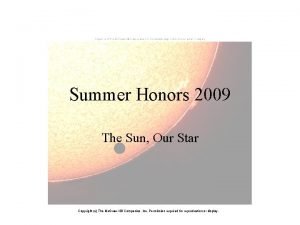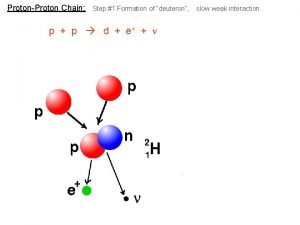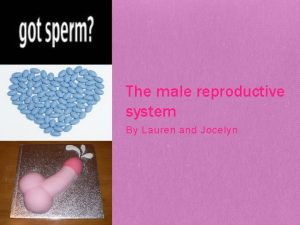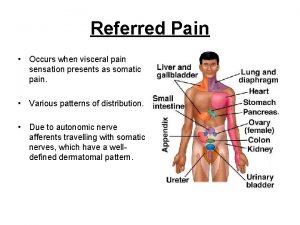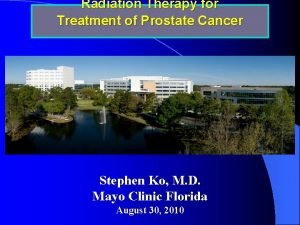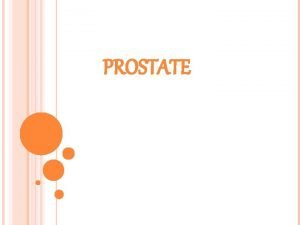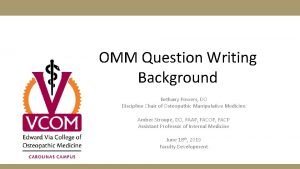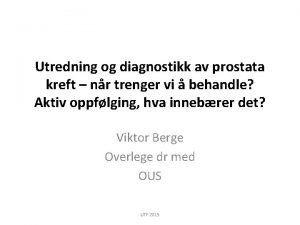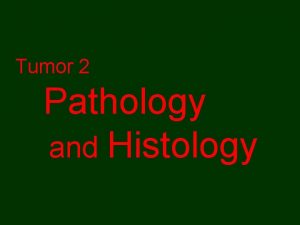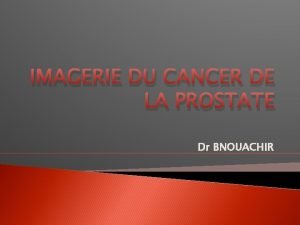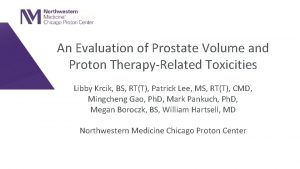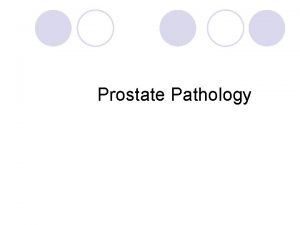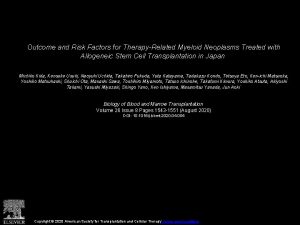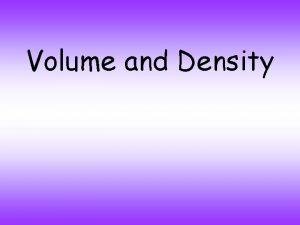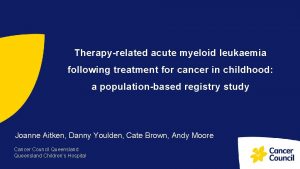An Evaluation of Prostate Volume and Proton TherapyRelated











- Slides: 11

An Evaluation of Prostate Volume and Proton Therapy-Related Toxicities Libby Krcik, BS, RT(T), Patrick Lee, MS, RT(T), CMD, Mingcheng Gao, Ph. D, Mark Pankuch, Ph. D, Megan Boroczk, BS, William Hartsell, MD Northwestern Medicine Chicago Proton Center

Purpose • To analyze trends in the occurrence rate and severity of patient reported adverse proton beam therapy toxicities as a function of prostate size for low and intermediate risk prostate cancer patients.

Background • The severity of symptoms from benign prostatic hyperplasia (BPH) does not correlate with the degree of hyperplasia 1 • The prevalence of gross hematuria in patients with BPH is unknown 2 -4 • Other urinary tract conditions can cause similar symptoms 1 1. Edwards JL. Am Fam Physician. 2015. 2. Kearny 3. MC, Bingham JB, Bergland R, Mead-D’Alisera P, Puchner, PJ. The Journal of Urology. 2002. Foley SJ et al. The Journal of Urology. 2000. 4. Foley SJ. The Prostate Journal. 2000. 3

Methods • Prospective collection of data for 688 prostate cancer patients • Proton Collaborative Group (PCG) registry study • 70. 0 Gy at 2. 5 Gy per fx, OR 79. 2 Gy at 1. 8 Gy per fx • Prostate size defined by MRI 4

Methods Continued • Patients divided into 5 groups • Median follow up of 2. 03 years • Genitourinary, gastrointestinal, and dermatological toxicities collected • Pearson chi-square test performed Prostate Size (cc) Patient Total < 25 76 26 -50 418 51 -75 155 76 -100 43 > 100 22 5

Gastrointestinal Results 6

Dermatological Results 7

Genitourinary Results • Notable increases in grade 1 and 2 hematuria with increasing prostate size • Very few high grade toxicities overall Grade 1 Grade 2 Asymptomatic; clinical or Symptomatic; urinary diagnostic observations only; catheter or bladder intervention not indicated irrigation indicated; limiting instrumental ADL CT-CAE Definitions Grade 3 Gross hematuria; transfusion, IV medications or hospitalization indicated; elective endoscopic, radiologic or operative intervention indicated; limiting self care ADL 8

Prostate Size and Hematuria Correlation Grade 1 p-value=. 019 Grade 2 p-value=. 006 9

Conclusion • Most proton therapy-related toxicities exhibited no significant relationship to prostate volume • Significant correlation between prostate size and incidence of low grade hematuria • Low severity of symptoms in patients treated with proton therapy irrespective of prostate size 10

Questions? 11
